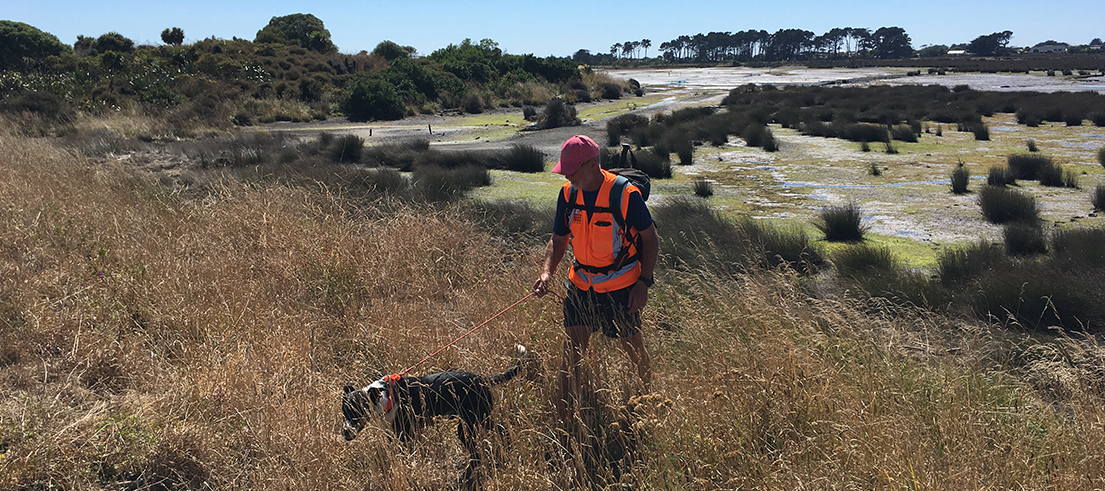
Spartina weed eradication programme success
The joint Environment Canterbury, Department of Conservation and Christchurch City Council spartina control programme has recorded another very successful year, with the goal of eradicating this pest from Canterbury taking a big step forward.
Spartina is a fast-growing, damaging weed that forms dense clumps and traps sediment in inter-tidal zones. It can cause an immense loss of biodiversity by turning mudflats that support wading birds, whitebait, eels and flounder, into dry meadows.
This season, only 17 patches of spartina required control, down from 78 in 2017.

An emerging spartina patch controlled this season in McCormacks Bay
Coordinated search and control efforts
We have been working with the Department of Conservation and Christchurch City Council to coordinate search and control efforts.
Principal Advisor for Biosecurity, Laurence Smith, said the progress of this joint programme is pleasing, and the partnership highlights the benefits of large-scale, collaborative approaches in biosecurity.
“The work to control spartina is essential if we are to maintain biodiversity and cultural values such as mahinga kai in Canterbury’s estuarine environments.”
Wink the wonder dog
Control efforts this year have now concluded, with agency staff undertaking search and control with the added help of dog handler, John Taylor and his one-eyed sniffer dog, Wink.
Wink is a fully trained conservation dog who has been trained to track down spartina within the challenging coastal environment.
This is the second year where Taylor and Wink have helped with the programme in Canterbury – in fact, they are crucial to its success as spartina becomes scarcer and the last remaining plants become increasingly difficult to track down.
How to spot Spartina
- Perennial, clump-forming grass to 1m tall with rhizomes and fibrous roots.
- Erect stems (4-9 mm diameter) with many brownish leaf sheaths.
- It grows in estuaries in the inter-tidal zone, and along the margin of the tidal reaches of rivers.
- Find out more on our managing plant and animal pests page.
- Record suspected sightings of spartina on the Spartina Hunt project page.
Main image: DOC conservation dog Wink and handler, John Taylor at the Avon/Heathcote Estuary.
